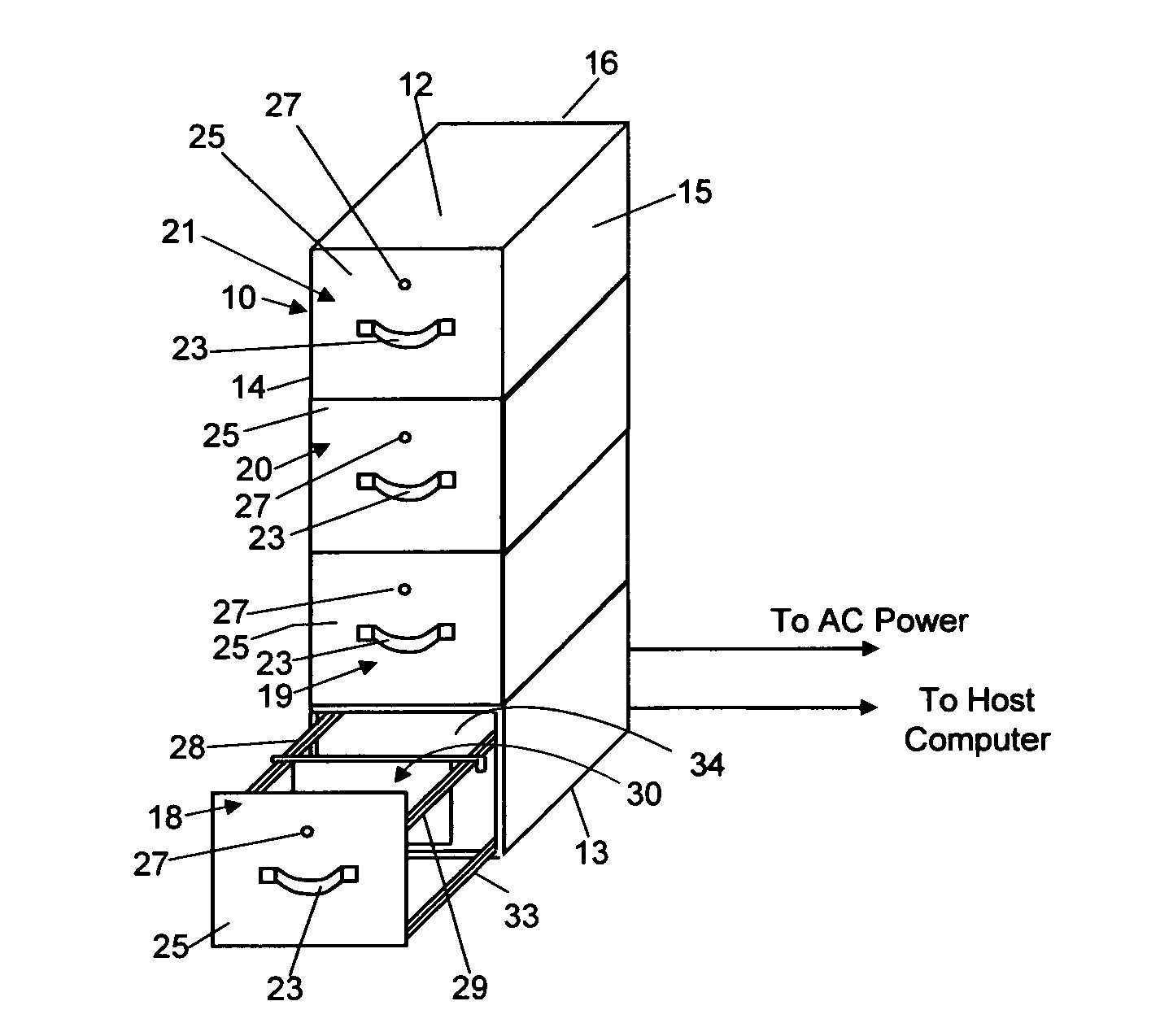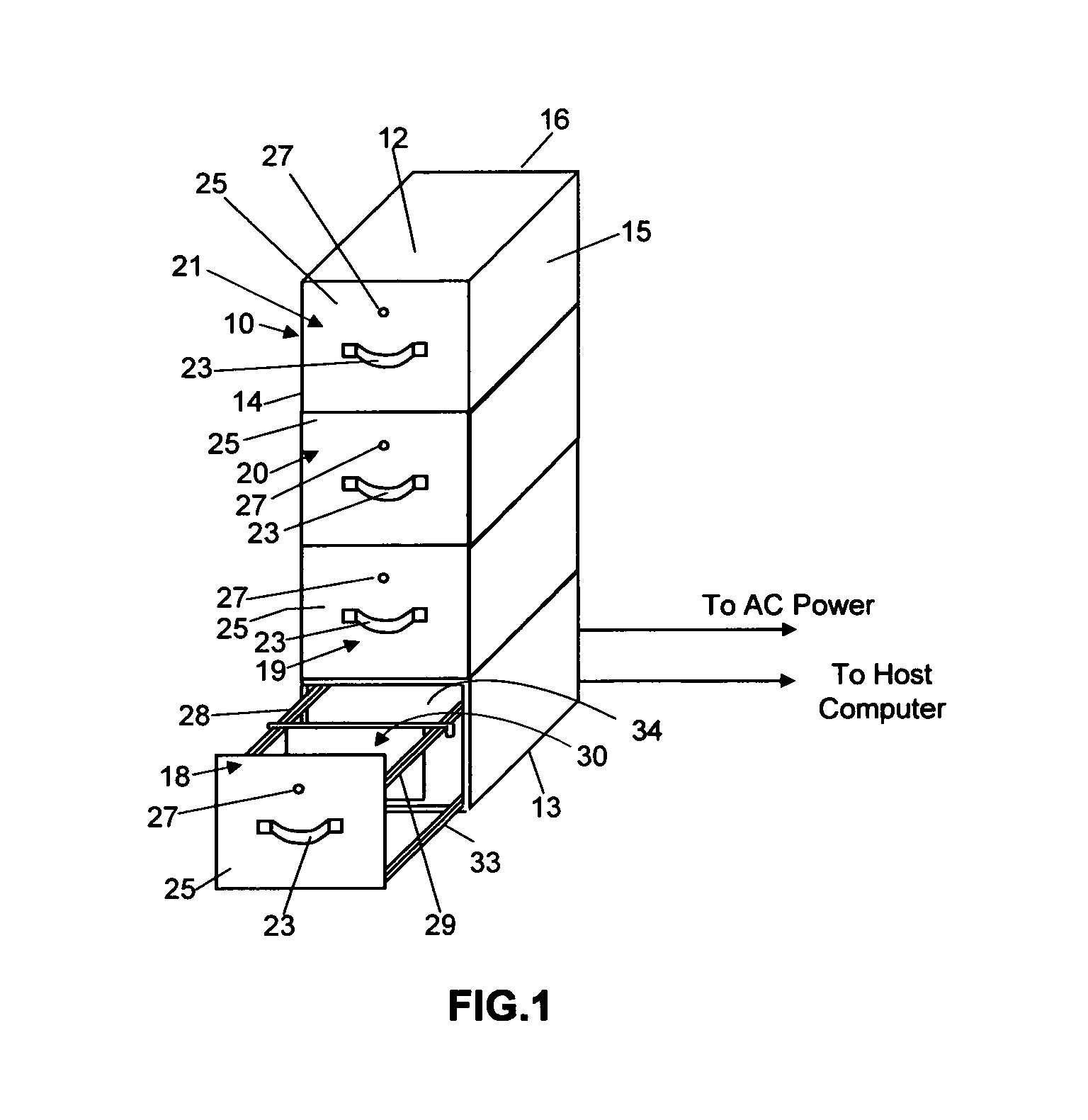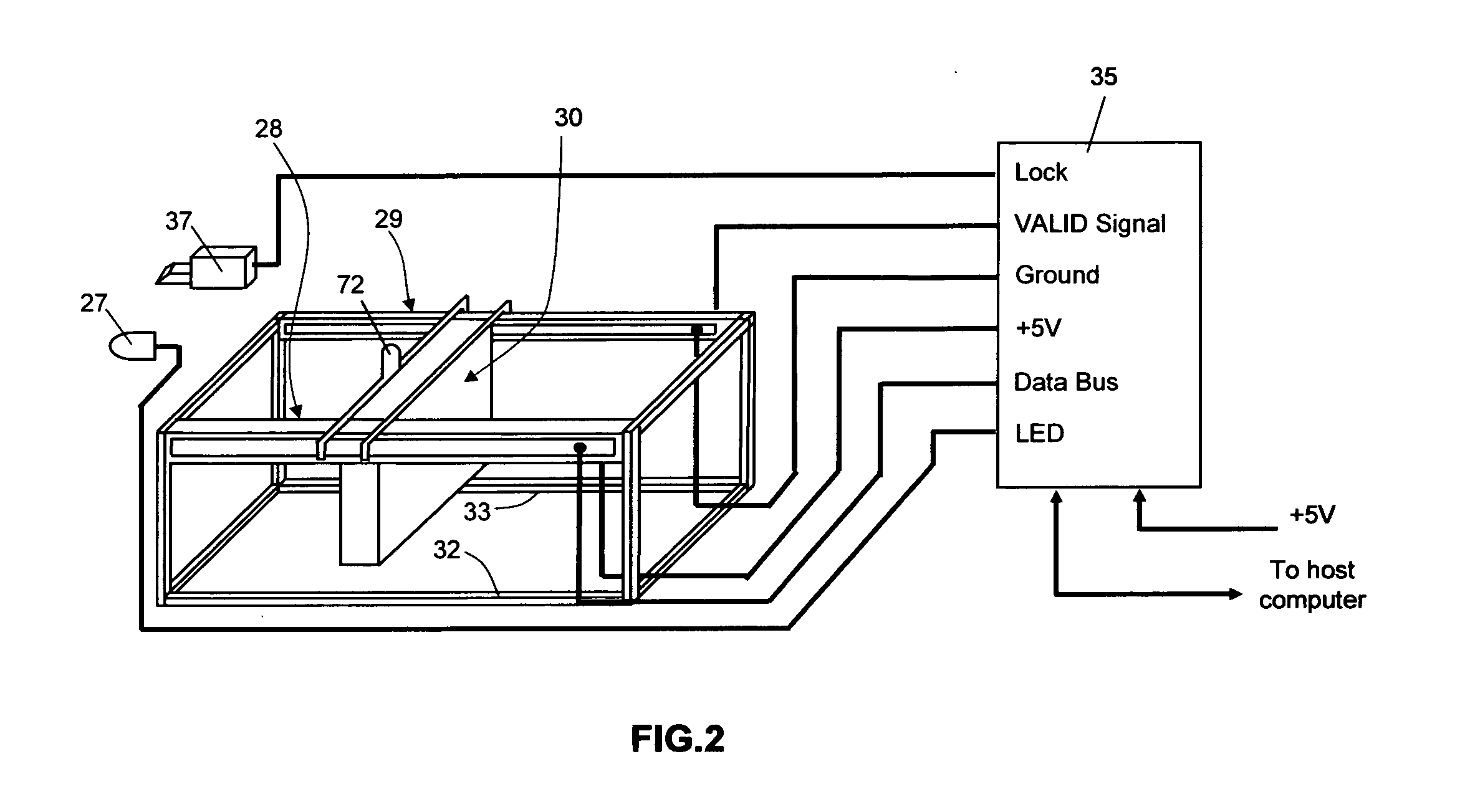Collective objects management system with object identification using addressable decoder units
- Summary
- Abstract
- Description
- Claims
- Application Information
AI Technical Summary
Benefits of technology
Problems solved by technology
Method used
Image
Examples
Embodiment Construction
The invention has wide application to a large variety of collective object management systems. The following is a detailed description of one application of the invention in the field of file management systems.
Turning now to the drawings, FIG. 1 is a perspective view, taken from the right front, of a first embodiment of the invention in a file storage system application and using direct electrical connections between the file cabinets and the associated computer. As seen in this Fig., a multiple drawer file cabinet 10 (four drawers illustrated) of known mechanical construction has the usual top 12, bottom 13, sides 14, 15, and back 16. Four drawers 18-21 are slidably mounted in cabinet 10, each drawer 18-21 having a drawer pull 23 mounted on a front panel 25 thereof. A visible indicator device 27 is also mounted on the front panel 25 of each drawer 18-21. Indicator 27 may comprise any one of a number of known elements capable of providing a visible signal when activated in the mann...
PUM
 Login to View More
Login to View More Abstract
Description
Claims
Application Information
 Login to View More
Login to View More - R&D
- Intellectual Property
- Life Sciences
- Materials
- Tech Scout
- Unparalleled Data Quality
- Higher Quality Content
- 60% Fewer Hallucinations
Browse by: Latest US Patents, China's latest patents, Technical Efficacy Thesaurus, Application Domain, Technology Topic, Popular Technical Reports.
© 2025 PatSnap. All rights reserved.Legal|Privacy policy|Modern Slavery Act Transparency Statement|Sitemap|About US| Contact US: help@patsnap.com



